
Izvrstan filmski časopis u video-formatu.
www.theseventhart.org/
The Seventh Art is an independently produced video magazine about cinema with profiles on interesting aspects of the film industry, video essays and in-depth interviews with filmmakers set in casual environments. The production is based in Toronto, Canada.
The magazine is based equally on the rich history of writing on cinema and French television shows about cinema, such as Cinéastes de notre temps. The video format allows us to seek ways to differentiate The Seventh Art from the former, while building on the latter through the lack of time or content limitations afforded by the internet. Conventional wisdom tells that internet users are looking for extremely short content, but we believe the value of this medium exists in the abolishment of assumptions of how users engage with content. Our sections err on the longer side because they are like a magazine, which you can pick up and put down at your leisure – never requiring that you consume all sections, or even each section in its entirety in one sitting.
With this video magazine format we strive to explore cinema in a manner that is at once accessible and in-depth as we pursue questions of film form/aesthetic that link back with the initial theorization of cinema as the seventh art – regardless of how unfortunately self-justifying this initial discourse had to be. We ask not only what is cinema, but when is cinema, where is cinema, how is cinema and why cinema, especially as media converges on new distribution models that are hopefully reflected in the cross-platform nature of our ‘magazine’.
Issue #12 William Vega & Oscar Ruiz Navia Interview
 Download .MP3 of this interview Download .MP3 of this interview |
William Vega is a Colombian director and screenwriter, who directed four short films before completing his debut feature in 2012, La Sirga. Prior to directing his debut feature, Vega was assistant director to Oscar Ruiz Navia on El vuelco del cangrejo (Crab Trap, 2009).
La Sirga follows a young girl who is suddenly without her family and home. She finds the only relative she has left: her reclusive uncle, who operates a dilapidated lakeside inn. The film grew out of the production of his short, Simiente (2011), where Vega discovered the La Cocha Lake setting.

La Sirga premiered at the 65th Cannes Festival’s Directors’ Fortnight before playing in the Discovery programme at the 2012 Toronto International Film Festival. We welcomed William and La Sirga‘s producer, Oscar Ruiz Navia, to our studio space, hosted by Onsite [at] OCAD U, to discuss his feature and Colombian cinema broadly.

La Sirga premiered at the 65th Cannes Festival’s Directors’ Fortnight before playing in the Discovery programme at the 2012 Toronto International Film Festival. We welcomed William and La Sirga‘s producer, Oscar Ruiz Navia, to our studio space, hosted by Onsite [at] OCAD U, to discuss his feature and Colombian cinema broadly.
This interview is from our extensive 2012 Toronto International Film Festival coverage and the full length interview was released in April 2013.
Special thanks to our friends for help in releasing Issue #12: Thomas Vinterberg, William Vega, Oscar Ruiz Navia, Bonne Smith, Don Marren, Rebeca Conget, Lina Rodriguez, Brad Deane, Dan Beirne, Etan Muskat, Suzan Ayscough, Liam Crockard, Charles Reeve, Lisa Deanne Smith, Dan Morgan, Simone Smith, Bradley Freeman, and Williams Design.
Issue #11 João Pedro Rodrigues & João Rui Guerra da Mata Interview
 Download .MP3 of this interview Download .MP3 of this interview |
João Pedro Rodrigues and João Rui Guerra da Mata are Portuguese filmmakers who have worked together in various capacities since their first short film, Parabéns! (1997). Rodrigues has directed three feature films – O Fanasma (2000), Two Drifters (2005) and To Die Like a Man (2009) – where genres are mixed to tell stories that each deal, to some extent, with the theme of transformation.


The films co-directed with João Rui Guerra da Mata – China China (2007), Red Dawn (2011) and The Last Time I Saw Macao (2012) – have increasingly blended non-fiction and fiction in their exploration of globalization, post-colonization and formal experimentation. The duo presented Macao in the Wavelengths program of the 2012 Toronto International Film Festival to appropriately high praise. It was our pleasure to host them at our TIFF studio space, Onsite [at] OCAD U, where we were treated to a candid, charming and insightful conversation about their incredible body of work.
This interview is from our extensive 2012 Toronto International Film Festival coverage and the full length interview was released in February 2013.
Special thanks to our friends for help in releasing Issue #11: Matías Piñeiro, João Pedro Rodrigues, João Rui Guerra da Mata, Blake Steels, Stephen Broomer, Sarbjit Kaur, Liam Crockard, Charles Reeve, Lisa Deanne Smith, Mark Jewusiak, Dan Morgan, Simone Smith, and Williams Design.
Issue #11 The Man Who Left His Will on Film: Video Essay
| » Download PDF Transcript |
A video essay that considers how Nagisa Oshima’s The Man Who Left His Will on Film (1970) can be understood through its representation of the space of Tokyo, its political climate in the 1960s, the modernity thesis, and Richard Sennett’s The Fall of Public Man. Essay written and edited by Christopher Heron.


This essay investigates the role the city plays in this political discourse in Oshima’s film, where the tension is deliberately set against its urban backdrop, which seems to offer the circumstance that allows these student protesters to meet, develop their ideas and form their resistance. However, the urban setting also impacts the individual and by looking at the notable film within the film, which is tied to the protests, we understand cinema’s position as a modernist medium that is capable of mirroring what modernity theorist, George Simmel, characterized as the shocks of the modern city. Yet in documenting this personal experience through the film, the main character is criticized by his peers. This intrapersonal urban tension is something we will explore through Richard Sennett’s thesis that the masks of public life in the 18th century, which made these political discussions less likely to cause strife, unfortunately gave way to a conflation of public and private in the 19th century. This theory can be used to elucidate an otherwise complex narrative that is increasingly concerned with negotiating the private existence within a public sphere – here, a student group supporting the Japanese Communist Party. By engaging in filmmaking, the personal urban experience is given expression, conflating the private and the public, but is rejected by the community it hopes to document, conveying the ultimate impossibility of artistically existing in the public sphere and, specifically, the political community.
This video essay is from the eleventh issue of The Seventh Art, released in February 2013.
Special thanks to our friends for help in releasing Issue #11: Matías Piñeiro, João Pedro Rodrigues, João Rui Guerra da Mata, Blake Steels, Stephen Broomer, Sarbjit Kaur, Liam Crockard, Charles Reeve, Lisa Deanne Smith, Mark Jewusiak, Dan Morgan, Simone Smith, and Williams Design.
Issue #10 Athina Rachel Tsangari Interview
 Download .MP3 of this interview Download .MP3 of this interview |
Athina Rachel Tsangari is a Greek filmmaker, visual artist and producer. She has produced fellow Greek filmmaker Yorgos Lanthimos’ films, including Alps and Dogtooth, among others through her production company HAOS films.
As a filmmaker she considers herself to be nomadic – a quality that her first feature, The Slow Business of Going, explores in both its story and its boundary-crossing form. Attenberg, her second feature, takes place in Greece, though it is more complicated than simply representing the nation, as its references to the anthropological quality of David Attenborough’s documentaries indicate.


Athina brought her latest work, The Capsule, to the 2012 Toronto International Film Festival. The short film is a component of a larger multimedia piece – a milieu that Athina has worked within alongside her feature films – that was commissioned by the DESTE Foundation for Contemporary Art. We sat down on a particularly rainy day at our studio space, hosted by Onsite [at] OCAD U, to discuss all of Athina’s films, The Capsule in particular, as well as her love for Michael Bay and genre films.
This interview is from our extensive 2012 Toronto International Film Festival coverage and the full length interview was released in January 2013.
Special thanks to our friends for help in releasing Issue #10: Whit Stillman, Costa-Gavras, Athina Rachel Tsangari, Cameron Bailey, Stacey Donen, Stephen Broomer, Ingrid Hamilton, Genevieve Parent, Liam Crockard, Charles Reeve, Lisa Deanne Smith, Casey Bee, Annaliese Levy, Melanie Bozzo, Mark Jewusiak, Dan Morgan, Simone Smith, and Williams Design.
Issue #1 Guy Maddin Interview
 Download .MP3 of this interview Download .MP3 of this interview |
Guy Maddin is a Canadian filmmaker known for his contemporary use of film styles associated with silent and early sound cinema. He has directed ten feature films (including My Winnipeg and The Saddest Music in the World) and a cornucopia of shorts, while also creating several installation works.
Guy was in Toronto to be honoured as part of Canada’s Top Ten Films for his latest work, Keyhole, and graciously sat down with us for a drink at Unlovable and a conversation about his body of work.
This feature interview is from the first issue of The Seventh Art, released in February 2012.
Special thanks to our friends for help in releasing Issue #1: Guy Maddin, Ron Mann, Andrew McIntyre, Casey Irvin, Simone Smith, Jay Ferguson, Johnny Kalangis, Matthew Dawydchak, Rich Duhaney, Unlovable and Wilson 96.
| The Seventh Art (The 7th Art) is produced by Daylight on Mars Pictures. This website and its content is copyright of The Seventh Art - © The Seventh Art 2012-2013. All rights reserved. Videos linked to in our 'Worth Viewing' blog are the copyright of their owners. |


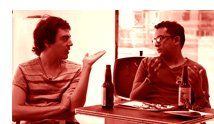













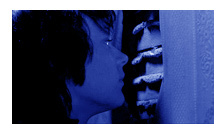







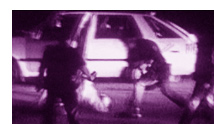
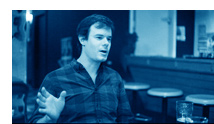

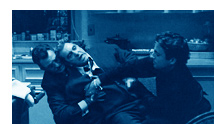
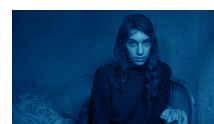


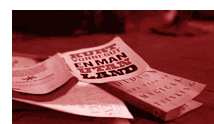
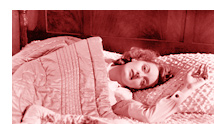







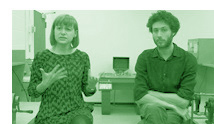

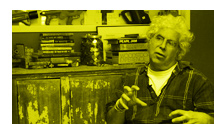



Nema komentara:
Objavi komentar